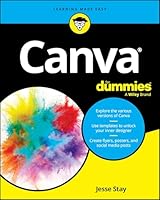
Designed for Use: Create Usable Interfaces for Applications and the Web, 2nd Edition
- Length: 325 pages
- Edition: 2
- Language: English
- Publisher: Pragmatic Bookshelf
- Publication Date: 2016-04-07
- ISBN-10: B01FRIOYEM
- Sales Rank: #1478724 (See Top 100 Books)
This book is for designers, developers, and product managers who are charged with what sometimes seems like an impossible task: making sure products work the way your users expect them to. You’ll find out how to design applications and websites that people will not only use, but will absolutely love. The second edition brings the book up to date and expands it with three completely new chapters.
Interaction design – the way the apps on our phones work, the way we enter a destination into our car’s GPS – is becoming more and more important. Identify and fix bad software design by making usability the cornerstone of your design process.
Lukas weaves together hands-on techniques and fundamental concepts. Each technique chapter explains a specific approach you can use to make your product more user friendly, such as storyboarding, usability tests, and paper prototyping. Idea chapters are concept-based: how to write usable text, how realistic your designs should look, when to use animations. This new edition is updated and expanded with new chapters covering requirements gathering, how the design of data structures influences the user interface, and how to do design work as a team. Through copious illustrations and supporting psychological research, expert developer and user interface designer Lukas Mathis gives you a deep dive into research, design, and implementation–the essential stages in designing usable interfaces for applications and websites.
Lukas inspires you to look at design in a whole new way, explaining exactly what to look for – and what to avoid – in creating products that get people excited.
Table of Contents
Part I. Research
Chapter 1. User Research
Chapter 2. Features Are Not Requirements
Chapter 3. Job Shadowing And Contextual Interviews
Chapter 4. Personas
Chapter 5. Activity-Centered Design
Chapter 6. Time To Start Working On Documentation
Chapter 7. Text Usability
Chapter 8. Hierarchies In User Interface Design
Chapter 9. Card Sorting
Chapter 10. Creating Usable Hierarchies
Chapter 11. The Mental Model
Part II. Design
Chapter 12. Keep An Open Mind
Chapter 13. Sketching And Prototyping
Chapter 14. Paper Prototype Testing
Chapter 15. Realism
Chapter 16. Natural User Interfaces
Chapter 17. Fitts’S Law
Chapter 18. Animations
Chapter 19. Consistency
Chapter 20. Discoverability
Chapter 21. Don’T Interrupt
Chapter 22. Instead Of Interrupting, Offer Undo
Chapter 23. Modes
Chapter 24. Have Opinions Instead Of Preferences
Chapter 25. Hierarchies, Space, Time, And How We Think About The World
Chapter 26. Speed
Chapter 27. Avoiding Features
Chapter 28. Removing Features
Chapter 29. Learning From Video Games
Part III. Implementation
Chapter 30. Designing The Back End
Chapter 31. Guerilla Usability Testing
Chapter 32. The First Run Experience
Chapter 33. Usability Testing
Chapter 34. Testing In Person
Chapter 35. Remote Testing
Chapter 36. How Not To Test: Common Mistakes
Chapter 37. User Error Is Design Error
Chapter 38. A/B Testing
Chapter 39. Collecting Usage Data
Chapter 40. Dealing With User Feedback
Chapter 41. You’Re Not Done







